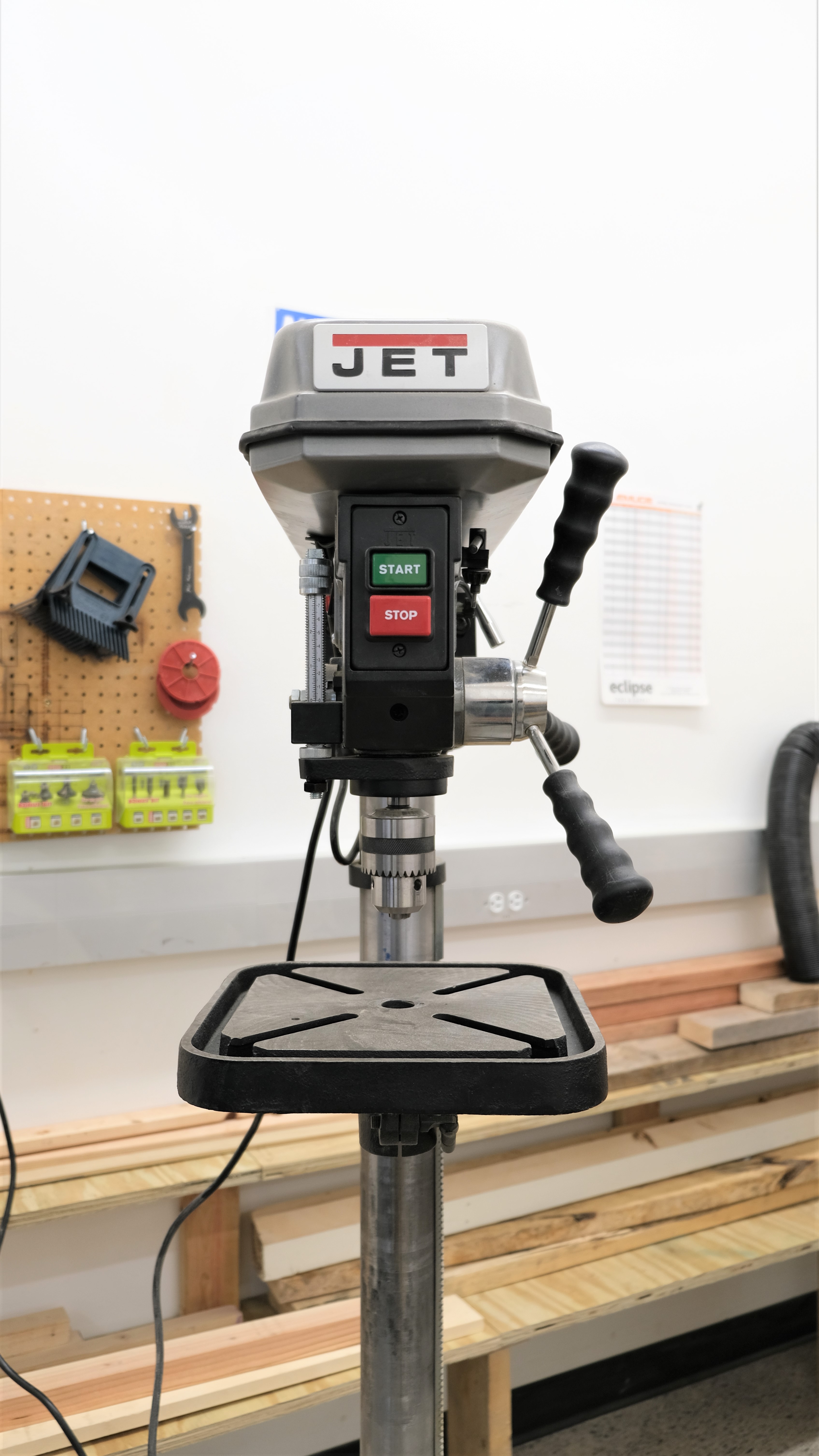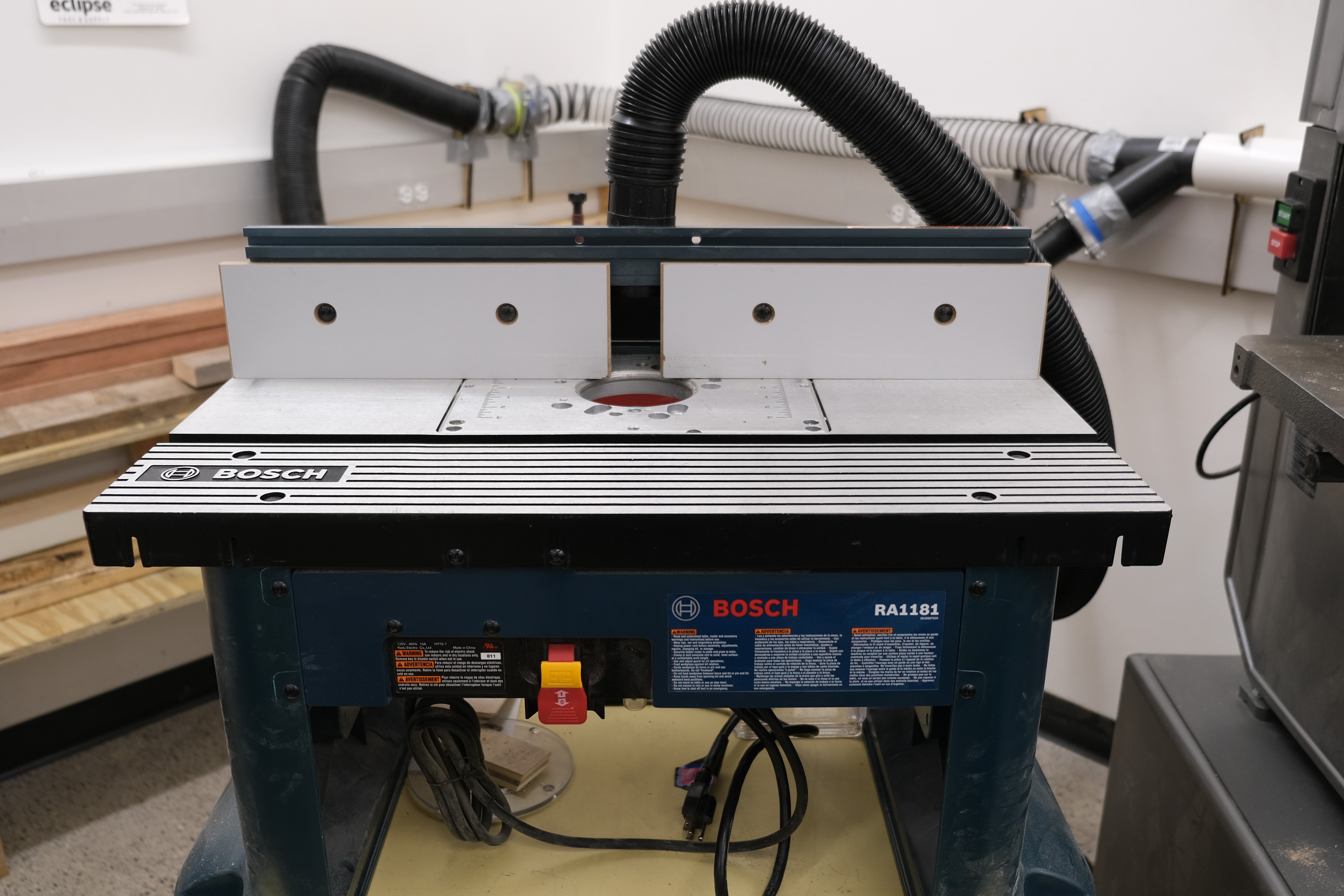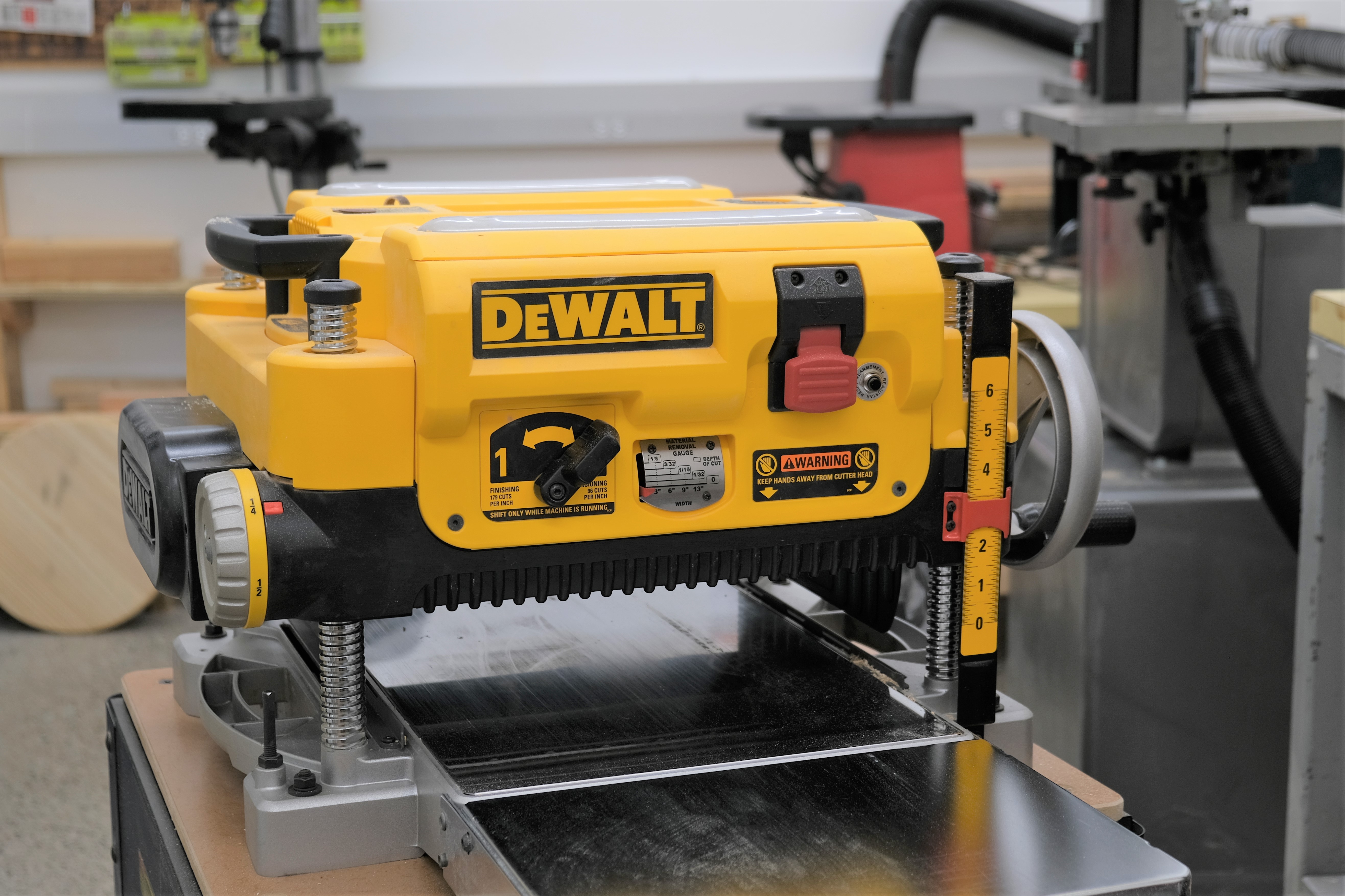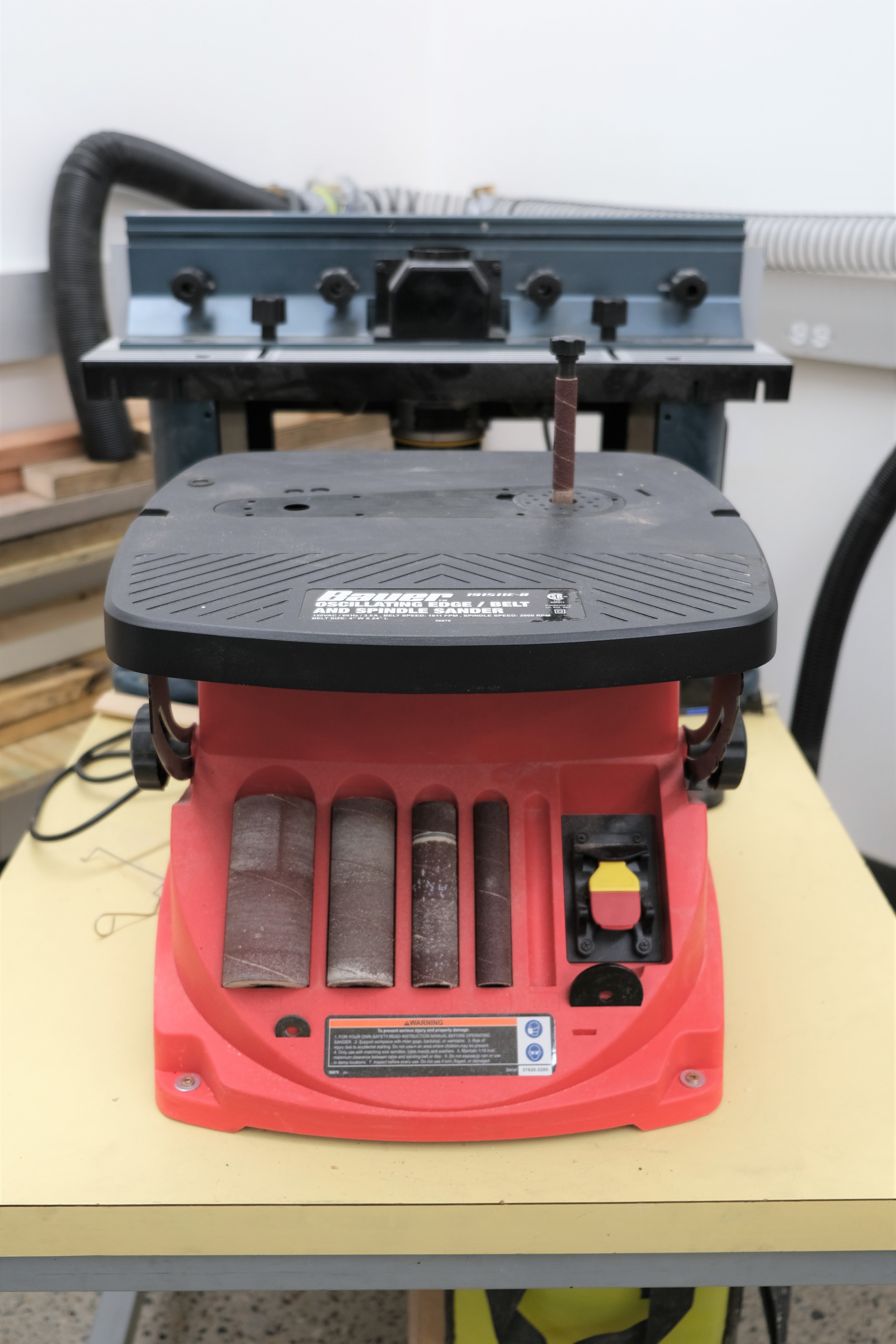Woodshop
Eye protection is required at all times in the woodshop. Ear protection is strongly recommended.
The woodshop in the Makerspace is relatively small but holds a lot of capability. PPE and proper training is required in the woodshop, and may not be used without the lab director present. Like all the other spaces in the Makerspace, you must clean up after yourself; there are vacuums as well as brooms and dustpans in the woodshop for you to use. Be sure to turn the shop air cleaner and dust collector on when using the woodshop!
Reading this page is meant to be an introduction to the capabilities of these tools. Always check with a makerspace employee before using one for the first time, and inspect each machine before every use!
List of Woodshop tools
Great for quick, straight cuts at specific angles. Round stock, irregular stock, or stock shorter than 12" may not be cut using this saw due to the high potential of kickback! If you cannot support the stock safely, ask a Makerspace employee.

Drill holes perpendicular to the opposite surface of your part! You must clamp or otherwise secure your work down to the table, and take sufficient steps to not drill into the table, or other metal workholding. There is a selection of Forstner bits that are reserved for use with the drill press. The drill press can be set up to stop at a specific depth if a through hole is not desired.
A great option for adding chamfers or fillets to wood, flush trim router bits are also available. Take care to always feed stock from right to left, never plunge into stock, and ensure the guards, chuck, and insert plate are all set appropriately. Multiple passes are often needed. Use feather boards to help keep stock in consistent contact with the bit, and keep your hands out of harms way.
The 12" thickness planer, or planer is able to cut wooden stock down to a consistent thickness relative to its bottom surface. This tool is great for creating dimensional wood from 2x4s or similar materials, however it will reflect any inconsistencies that are present in the bottom surface of the board. Wood with any nails, screws or staples in it will ruin the blade, so the planing of pallet wood is prohibited.
The dust collector must be used in conjunction with the planer.
The vertical bandsaw is great for cutting flat stock, trimming awkward edges, and other unique geometries.
For cutting sheets of plywood, MDF, OSB, and the like. Make sure the work is fully supported by the red rollers - never cut something that is not supported by at least two rollers!
Sand along planes, inner radii, and more with the spindle or belt sander. Take care to not loose any parts when switching between options and always set up the appropriate guards.
The handheld router can be used to create pockets in flat surfaces, change edge profiles and much more. Clamping down your work is critical for safely using this tool. Cutting small amounts of material will help keep the machine in control and reduce deflection in the collet and shaft.
Rotary tools are multipurpose tools that can hold a variety of bits that can cut, polish, sand, engrave, and grind. Using the correct bit for the job is necessary. Always be aware which direction the bit will spin, keep everything that could get snagged (hair, clothing, cords) well out of reach of the tool, and never set a tool that is still in motion down. The Makerspace has a variety of bits, tool holders, guides, and flexible shafts to help you with your Dremel project.
See the 3 axis page for details.





